Konigsberg Bridge Problem in Discrete mathematicsKonigsberg
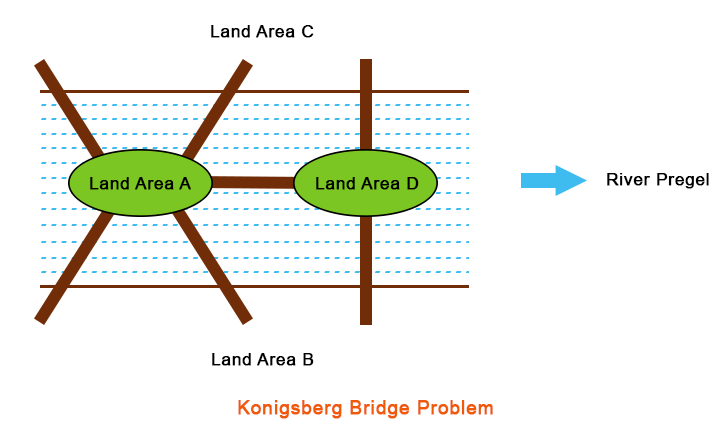
Konigsberg Bridge problemThe Konigsberg Bridge contains the following problem which says: Is it possible for anyone to cross each of the seven bridges only a single time and come back to the beginning point without swimming across the river if we begin this process from any of the four land areas that are A, B, C, and D?. Solution of Konigsberg Bridge problem
With the help of following graph, Euler shows the given solution. 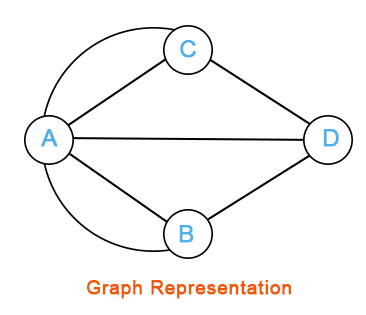
In the above graph, the following things have:
Now we will consider an image and try to understand the concept of Konigsberg Bridge: 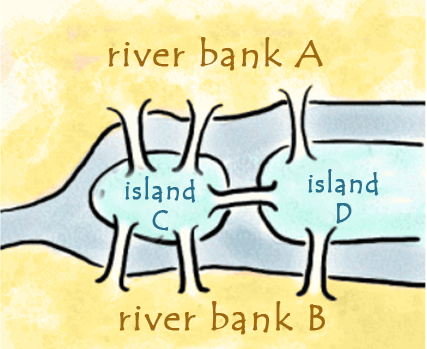
For the citizens of Konigsberg, it became a tradition in which they tried to walk around the town in such a way that they crossed each bridge only a single time, but it proved to be a difficult problem. So, in the end, Euler proved that this type of walk is not possible. Euler proved it with the help of inventing a kind of diagram, which is known as the network. This network is made up of arcs and vertices. The arcs are also known as lines, and vertices are also known as dots where lines meet. 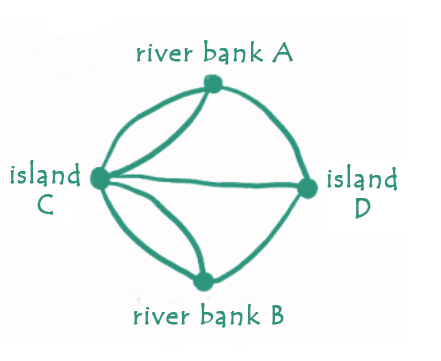
In this diagram, he used two islands and 4 dots (vertices) for two riverbanks. With the help of A, B, C, and D, these dots have been marked. The 7 lines (arcs) are used to show the seven bridges. In the above diagram, 3 bridges (arcs) were used to join riverbank A, and 3 arcs were used to join riverbank B. As same, 5 bridges (arcs) were used to join island C, and 3 arcs were used to join island D. This shows that all the vertices of this network contain an odd number of arcs, so these types of vertices are called odd vertices. (For an even vertex, there must be an even number of bridges joining to it). We have to keep in mind that the problem of Konigsberg was to travel around the town by crossing each bridge only a single time. On Euler's network, it meant that all the vertices had to be visited and traced over each arc only a single time. He worked on it and said that it would not be done, because to do this, we want the odd vertex, and for odd vertex, the trip must start and end at that vertex. So there can be only 2 odd vertices, and there can be only one starting and one end only if we can trace over each arc only once. Since there is a total of 4 odd vertices in the bridge, so it would not be possible to do. So Euler observed that at the time of tracing the graph, if they try to visit a vertex, then the following things happen:
On the basis of the above observation, Euler also discovers one thing about a network, i.e., with the help of a number of odd vertices which exists in the network is used to determine whether any network is traversable or not. About the network, Euler found that if a network contains the following things, only then that network will be traversable:
Now,
Note: If the Konigsberg citizens want to build eight bridges from one land to another land, i.e., from A to C, then it will contain the following property:
Lastly, we have a question what happens if the network does not contain the odd vertices at all? Can the network be traced in this situation? The diagram of even vertices is described as follows: 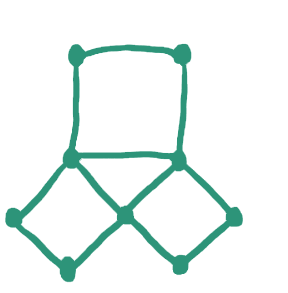
When the invention of a network was going on, a totally new type of geometry was found, which is known as the Topology. At this time, we are using topology in a lot of ways, like planning and mapping railway networks. |
 For Videos Join Our Youtube Channel: Join Now
For Videos Join Our Youtube Channel: Join Now
Feedback
- Send your Feedback to [email protected]
Help Others, Please Share










